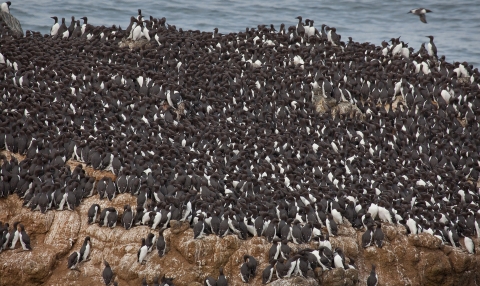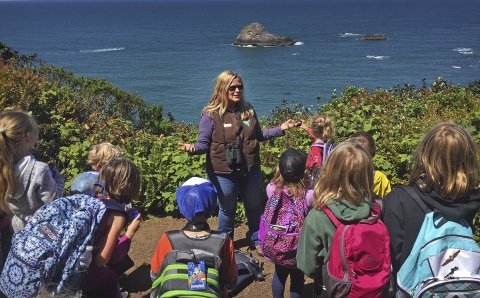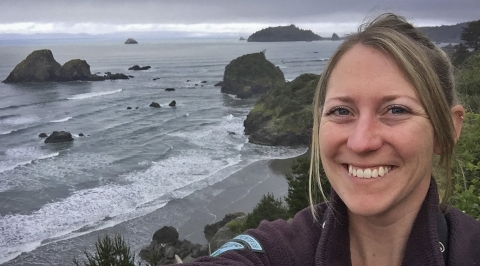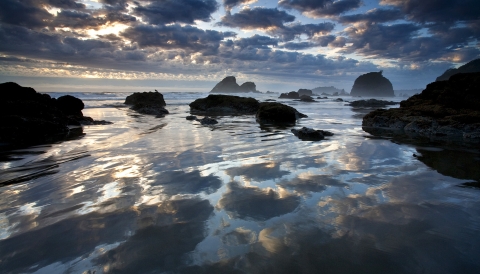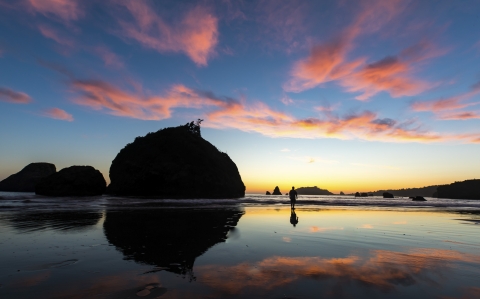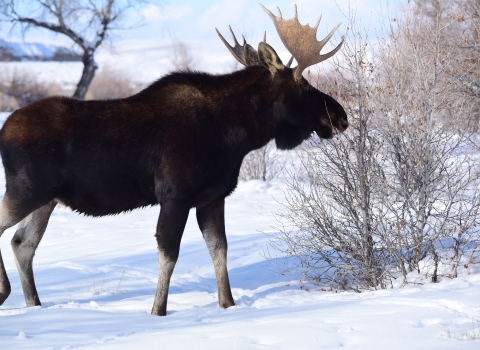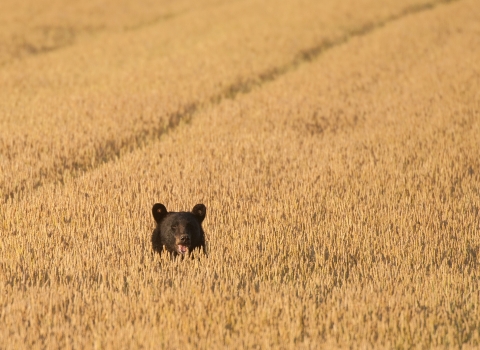Would you like to make a difference in a seabird’s life?
You can. Just ask members of the North Coast Chapter of the Seabird Protection Network. They are looking for volunteers this spring and summer in Trinidad, California, to assist with Community Science. The organization needs volunteers to collect scientific data that identifies current or potential disturbances to nesting seabirds, including cormorants, murres, and gulls.
Using U.S. Fish and Wildlife Service funding secured from the Natural Resources Damage Assessment process from two oil spills in Humboldt Bay in 1997 and 1999, the chapter was established in 2016. This breeding season (April-August) will be the chapter’s fourth year of monitoring human disturbances such as recreation in areas around seabird nesting habitat.
“This money isn’t endless, so we want to establish this program and carry it into the future largely with the help of a volunteer community,” said Lynn Roberts, a former biologist with the U. S. Fish and Wildlife Service's Arcata field office who retired in 2019.
One of those volunteers is Bruce Hales, a Star Seabird monitor.
“I've always enjoyed observing all wildlife; in particular birds. I would have liked to have a career studying them, but for various reasons, that never happened,” he said. “When I discovered there was a local citizen scientist observation of seabirds program, I figured here was an opportunity where I could take the skills I’ve acquired from a lifetime of amateur observation and apply them to a meaningful scientific endeavor.
“The most interesting part of this program is that, in going out to specific spots on a regular basis and recording what you see, you get to witness the incremental changes that happen over time. Seeing the same birds week after week building nests, sitting on eggs, and hatching chicks and watching them feed, grow, and finally fledge seems to give me a personal stake in this natural process, and I do what I can to make sure it continues. And it’s not just with the birds but with the coastal environment in general. Changing weather, changing ocean conditions, and even the changing road conditions on Scenic Drive accessing the survey sites tends to give a person a sense of connection to a place.”
The North Coast Chapter joins the Seabird Protection Network’s existing chapters in central and Southern California, coordinated by the Greater Farallones National Marine Sanctuary.
“Our goal is a network that spans from the Oregon border, south to the Mendocino coastline,” said Leisyka Parrott, interpretive specialist for the Bureau of Land Management’s Arcata office.
Parrott is currently an environmental educator in a related program in Trinidad known as Hands on the Land that connects students, teachers, families and volunteers with public lands. The BLM uses the California Coastal National Monument as an outdoor classroom by leading tidepool, kayaking and seabird watching field trips.
Each field trip includes classroom learning from a place-based curriculum developed by local educators in the Trinidad area. In collaboration with local partners and tribes, the classroom in Trinidad has over 5,000 students annually participating in these programs.
“I lead field trips with students from all over Humboldt County, and I will tell you their whole ‘being’ lights up when they see a common murre nesting through the spotting scope,” Parrott said. “I feel like the timing is ripe for the North Coast Chapter of the Seabird Protection Network, and I am happy to be a part of it.”
The Service and BLM are not the only agencies to be thrilled about the development of the chapter. Partners include the Audubon Society, Trinidad Coastal Land Trust, Trinidad Museum, Trinidad Rancheria, Yurok Tribe, Humboldt State University and many others.
The partnerships are important, as “the best place to view the California Coastal National Monument and monitor seabirds is from land that is managed by local and state agencies,” Parrott said.
“It incorporates so many different partners, which is always powerful,” Roberts said. “We’re hoping this effort expands.”
According to Roberts, the work the partnership agencies and the public will do is critical as the common murre needs to breed successfully to contribute to population increases. Trinidad seabirds like most seabirds typically spend most of their life at sea and only come to coastal rocks to breed. The common murre colonies in Trinidad include Pilot Rock, Blank Rock, Flatiron Rock, Green Rock and White Rock.
The goal is to set up training for the public that standardizes methods for monitoring human disturbance. This will help the group identify where to best monitor the common murre and identify specific areas where humans may disturb the birds.
“For example, seabirds flying off or flushing from their breeding colony and exposing their eggs and chicks would indicate a high level of disturbance,” said Shannon Brinkman, Service biologist for the Arcata Fish and Wildlife Office.
Potential disturbances could include kayaking, fishing boats, low flying airplanes, drones, human movement on low tide or climbing rocks.
The goal of the North Coast Chapter is to develop outreach, education and interpretation relevant to the human disturbance taking place in Trinidad. These products would be shared with the public through various avenues such as brochures, flyers, signage, face-to-face meetings, discussions on the beach, etc.
The value to the public is endless as bird watchers generated more than a $100 billion in total industry output, including 666,000 jobs nationwide (ref: http://farallones.noaa.gov/eco/seabird/).
A 2011 survey produced by the U.S. Fish and Wildlife Service estimates $13 billion in local, state and federal tax revenue in the U.S. Additionally, bird watchers spend annually 3.1 million days birding along the Central California coast and ocean. The Trinidad area is the third most important seabird nesting area in California behind Castle Rock and the Farallones.
Other seabirds to benefit from the outreach and education include: brandt’s cormorant, pelagic cormorant, double-crested cormorant, pigeon guillemot, leach’s storm-petrel, fork-tailed storm-petrel (cavity nesters), western gulls and the federally threatened marbled murrelet.
As a biologist, the dream is that your research and what you do benefits the species you’re working with,” said Brinkman, who studied seabirds for her Master’s thesis. “I am super excited to see us learn more about the impacts of human disturbance to nesting seabirds and how we can change those behaviors to help the seabirds. I am also interested in the human aspect of it – I want to get the public interested in seabirds because they are amazing.
“The continued community, partner and volunteer support for this program is overwhelming and truly makes it a success. It is inspiring to see how much people care about the seabirds along our north coast and how they are making a difference.”
Since 2016, the North Coast Chapter continues to grow, establishing a very successful community science program. In 2019, a total of 34 community scientists volunteered 579 hours toward seabird population monitoring, educational outreach and recording disturbance events.
Interested volunteers should contact Parrott at (707) 825-2313 or write to lparrott@blm.gov.


